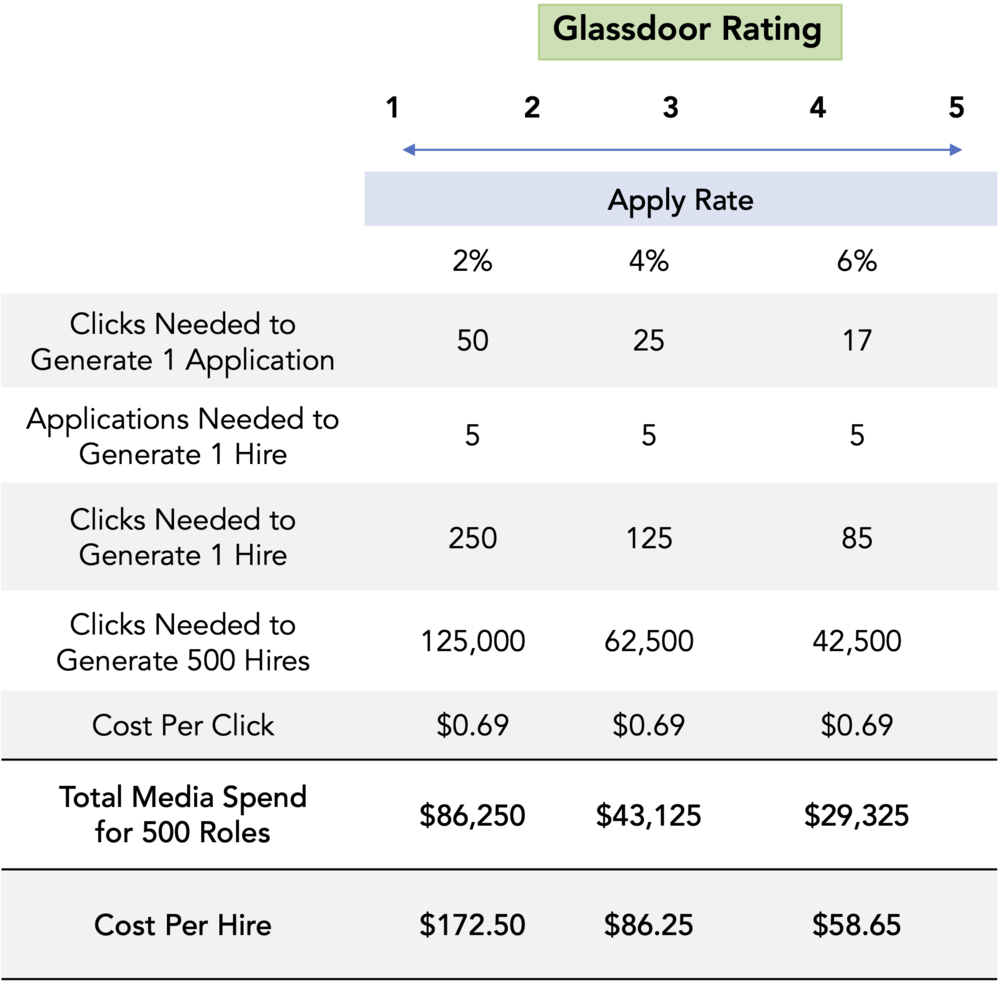
Our Key Learnings From Year One As A Bootstrapped Company
Last week we hit the twelve month mark at Change State. We’d be lying if we told you the
Change State is now part of Recruitics! Learn more
We’ve written at length about the value of an employer brands to an organization, yet the project of quantifying the ROI of a strong employer brand remains frustratingly elusive. This is partly because employer brands influence a business’s bottom lines in many indirect ways, perhaps most notably by supporting their consumer brands. Moreover, because an employer brand is expressed through so many different touch points across every stage of the prospect -> candidate -> employee -> alumni journey, it’s often impossible to draw a direct (that is, causal) link between a strong brand and any specific financial outcome, whether it be increased revenue, decreased expenses, or both.
An easier question to ask is how an employer brand specifically influences talent acquisition costs. Most would readily agree that having a good reputation among employees and prospects (e.g., a strong employer brand) is likely to make recruitment and retention easier, which of course *should* save talent acquisition teams time and money. But how much money?
Recent stats by Appcast in its 2019 Recruitment Media Benchmark Report offer an intriguing starting point. Specifically, employers with Glassdoor ratings of <3.0 have apply rates ranging from 2.4-4.3% while employers with Glassdoor ratings above 3.0 see apply rates as high as 6.6%. These absolute numbers are small, but on a percentage basis, the data suggests that strong(er) employer brand are correlated with increased apply rates – perhaps 50% higher or more. Which got us thinking: how much money does this theoretically save an organization?
Consider Acme Industries, which just launched a campaign to hire 500 customer service representatives. Acme’s TA team knows it typically takes around five applications to source a single hire, which means it will need around 2,500 applications to fill 500 roles. And the apply rate – which again is correlated with the organization’s Glassdoor rating – will dictate how many clicks Acme needs to generate a single apply. For instance, a 2% apply rate means they need to source 50 clicks for every successful application submission.
All that’s missing now is the average cost per click (CPC) for customer service roles, which again thanks to Appcast, we know to be around $0.69. Putting it all together, we can now estimate some ballpark costs for filling these 500 roles and even better, project how the costs will vary depending on the organization’s Glassdoor rating.

Share On:
suggested articles

Last week we hit the twelve month mark at Change State. We’d be lying if we told you the

Discover how consumer and employer brands influence each other, and why investing in both is crucial for sustainable growth.

In our recent blog post, “How Generative AI Is Shaping the Future Workforce”, we explored how AI is transforming
Software Solutions
Copyright © 2025 Charge State. All rights reserved.
Software Solutions
Copyright © 2025 Charge State. All rights reserved.